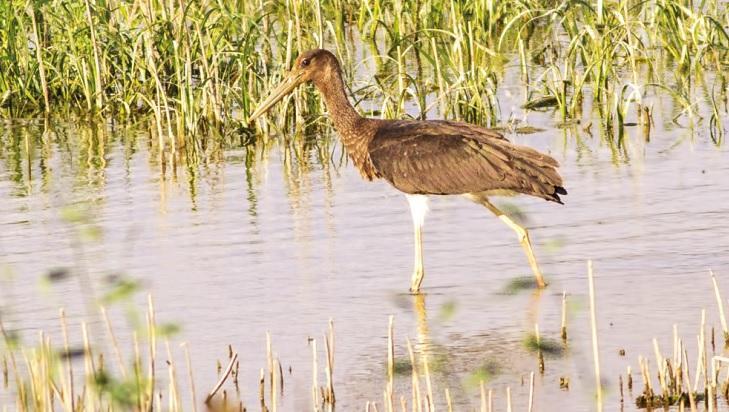
A black stork, whose migration route has been followed since 2016 with a satellite transmitter attached to it, entered Turkey from the eastern province of Hatay 10 days ago.
The stork, which reached Romania via Bulgaria, travels form 15,000 kilometers every year between Africa and Europe.
The life of the endangered species of black stork, named “Mare” by stork observer Maria Marika in Germany, has been followed by satellite transmitters for about four years.
Mare’s spring migration started about a month ago. Stating that Mare is a female black stork, Marika noted that in 2016 a satellite transmitter was installed as part of a research project supported by the Max Planck Ornithological Institute.
Marika said that Mare’s sister, Bille, was also installed a satellite transmitter to understand whether or not siblings in the same nest were traveling together.
“The data clearly shows that these birds are not doing this. During the first five days of their travel, we followed the distance between both birds. On Sept. 4, Mare’s sister was killed by a hunter. Mare’s adventure still continues. Mare also had many babies in this process,” she said.
In the autumn and spring migration periods, Mare migrates from Europe to Africa, from Africa to Europe via Turkey. Mare’s journey in Turkey is being followed by Fikret Can, who is known as the “Stork Father” and the founder of the Leylekel group, and a volunteer Emrah Turan. Mare travels about 15,000 kilometers in every migration period.
Stating that she traveled from South Africa along the Nile Valley and moved from Cairo on March 23, Can said, “For four years, Mare travelled about 15,000 kilometers every year from Africa to Europe in spring and from Europe to Africa in autumn.
After departing from Cairo, she came to Hatay border and entered Turkey about 10 days ago. Staying at 35 points in total, she came to Biga Gümüşçay border on April 1. Mare reached the northeast of Romania from Biga on April 4, following Tekirdağ, Edirne, Bulgaria, over the Marmara Sea, just above the Dardanelles Strait.
The migration journey will continue until Germany. She can travel an average of 300 kilometers per day.”
Black storks in risky group
Pointing out that the black storks, whose scientific name is “Ciconianigra,” are among the risky groups on the red list, Turan noted that his beak is thin, long and red and his legs are red. Stating that black storks, unlike the others, stay away from settlements, Turan said,
“Black storks live in undisturbed forest areas, wetlands, semi-marsh areas on forest shores, near pasture and fresh water sources. It is known that they nest even over 2,000 meters on rocky mountain slopes.”
Stating that black storks come to our country from Africa at the end of the summer, while some of them were breeding in Anatolia, most of them passed to Europe via Istanbul, Turan said, “In the fall, the reverse migration to Africa begins. Some are wintering in a few areas in our country. Autumn migration is in mid-August to mid-September, and spring migration is in mid-March. They are regularly wintering in Gediz Delta. The highest number of black storks in the immigration period can be easily followed while passing through the Bosphorus in late September. They can travel 100 - 250 km [maximum 500 km] per day. They have a wide distribution in the world. The world population is approximately 500-520,000.”